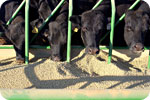
Deadly Animal Virus May Soon Come to U.S. Mainland
Friday, May 02, 2008 by: Barbara L. Minton
Tags: infectious disease, health news, Natural News
- Newly released JFK files reveal Pentagon's role in creating Lyme disease and covid in the same lab
- Trump's greatest betrayal so far: Accelerating Middle East wars, silencing dissent, and serving Zionist masters
- Trump nominates VACCINE ZEALOT Susan Monarez to lead the CDC, sidelining RFK Jr.'s reform efforts
- The hidden dangers in your kitchen: How cooking methods impact diabetes, cancer and aging
- STARDUST, a secretive Israeli-US startup, plans risky solar geoengineering experiment to BLOCK OUT THE SUN
- DEADLY DECEPTION: How COVID vaccines increased mortality rates and why authorities hid the truth
- Arkansas embraces medical freedom with landmark ivermectin law
- Lab leak confirmed? Boris Johnson's stunning reversal on COVID origins sparks global debate
- Analysis: The coming economic collapse, a mass uprising and Trump's three secret weapons to halt the growing revolt
- CDC finally halts $11 billion COVID funding scam as health officials admit the ‘pandemic’ was a fraud
- Home gardening for preppers: A beginner's guide to growing your own food
- The forgotten hormone hero: How vitamin C quietly balances mood, stress and reproductive health
- Festive flavors: The sweet history, nutritional profile and health benefits of pecan pie
- Elon Musk: Aliens could be here on Earth RIGHT NOW
- Dr. Mike Yeadon releases 15-minute testimony - WATCH - about genocidal intent of COVID “vaccines”
- California's social media censorship law struck down: A victory for free speech or a threat to online safety?
- YouTube’s double standard: CEO defends censorship while claiming free speech champion status
- Sugarcane extract superior to cholesterol-lowering drugs?
- Newly released JFK files reveal Pentagon's role in creating Lyme disease and covid in the same lab
- Elon Musk: Aliens could be here on Earth RIGHT NOW
- Reclaim your health: How midlife exercise reverses years of inactivity
- Trump reverses course on Gaza plan, says “nobody is expelling Palestinians”
- EPA advisor admits the agency is funneling billions to climate groups ahead of Trump’s return to White House
- Big Pharma's $8 Billion bribery scheme exposed: how doctors are pushed to prescribe junk science, not heal
- Space war brewing? Russia threatens to destroy Starlink satellites
- A lack of integrity in Academia: Harvard professor found GUILTY of fraudulent research to promote CRT theory
- Survival 101: Effective EMF blocking techniques
- Rep. Nancy Mace introduces bill to ban biological males from female facilities on federal property
- Mike Adams Sermon 66: God will DESTROY ISRAEL for its wickedness
- Pilots report mysterious lights 'moving at extreme speeds' across Oregon skies
- 5 Simple steps to boost your brainpower: How to strengthen executive function in a distracted world
- Historian warns Israel may be entering an “IRREMEDIABLE DECLINE”
- Florida takes a stand: DeSantis proposes permanent ban on mRNA vaccine mandates
- RFK Jr.'s SSRI antidepressant investigation sparks liberal meltdown, exposes Big Pharma's dangerous game
- OpenAI whistleblower who dissented against how the company trained ChatGPT found dead
- Sugarcane extract superior to cholesterol-lowering drugs?
- EPA advisor admits the agency is funneling billions to climate groups ahead of Trump’s return to White House
- The Health Ranger releases “Vaccine Zombie” song and music video, using AI-animated zombies for the music video
- California's social media censorship law struck down: A victory for free speech or a threat to online safety?
- Dr. Mike Yeadon releases 15-minute testimony - WATCH - about genocidal intent of COVID “vaccines”
- The pandemic as a tool for INDOCTRINATION: Understanding “The Indoctrinated Brain” by Dr. Michael Nehls
- Mike Adams releases country western hit single: Goin’ Back in Time is Comin’ Home
- Mike Adams releases music poetry sensation: A Child of God
- RFK Jr. clears key hurdle: Sen. Susan Collins backs controversial HHS nominee, signaling a new era for health policy
- Florida takes a stand: DeSantis proposes permanent ban on mRNA vaccine mandates
- Unpacking the Lies That We’ve Been Fed – new song and music video released by Mike Adams, the Health Ranger
- Mike Adams releases new song and music video: Nothing More Disgusting Than a Globalist
- Congratulations to the FULLY UNVACCINATED as you resisted the COVID-19 PROPAGANDA MACHINE fueled by over $100 BILLION
- “Why we influenced the 2020 elections”: Facebook files reveal the coordinated effort to bury the Hunter Biden laptop story
- Michigan sheriff announces criminal investigation into 2020 election crimes, Dominion Voting Systems
- Israeli soldiers accused of even more torture and abuse in the West Bank
- Migrants are taking advantage of recent hurricanes to scam residents and loot their homes
- House Intelligence Committee calls for the ARREST and PROSECUTION of Dr. Anthony Fauci
- Peter Rost exposes Big Pharma corruption in his book “The Whistleblower: Confessions of a Healthcare Hitman”
- Red Cross issues warning to stop blood plasma donations from vaccinated people
- Scientists confirm: GENIUS brain function can be spontaneously unleashed in humans without any apparent cause
- EPA advisor admits the agency is funneling billions to climate groups ahead of Trump’s return to White House
- HYSSOP: What research reveals about the health benefits of this ancient holy herb
- Two containers with completed ballots fall out of truck in Florida
- Fully vaccinated about to see “tsunami” of illness and death, warns virologist
- Global leaders unite to clamp down on “misinformation” with UN-backed Cascais Declaration
- BREAKING: 2025 NDAA authorizes mandatory military draft of WOMEN across America… as Pentagon pursues global NUCLEAR war with both Russia and China at the same time
- Michael Yon warns of a ZIONIST TAKEOVER in Trump’s second administration
- BOMBSHELL: DNA testing kits are a SCAM to develop ethnic-specific bioweapons
- Ozempic and Wegovy weight loss drugs are injectable LIZARD VENOM PEPTIDES that may unleash a devastating wave of organ failure… side effects align with symptoms of SNAKE BITES
- Israeli soldiers accused of even more torture and abuse in the West Bank
- These 13 countries just signed an agreement to engineer a global FAMINE by destroying food supply
- NASA admits that climate change occurs because of changes in Earth’s solar orbit, and NOT because of SUVs and fossil fuels
- RFK Jr. clears key hurdle: Sen. Susan Collins backs controversial HHS nominee, signaling a new era for health policy
- Sermon 30: How Jesus reveals Caesar’s FAKE CURRENCY and FALSE AUTHORITY
- Coriander seeds: Ancient medicine backed by modern science
- Arizona officials claim Maricopa County needs 10-13 days to tabulate results of the election
According to an April 11th Associated Press article by Larry Margasak, concerns about a catastrophic outbreak of hoof and mouth disease have prompted Congressional Democrats to demand internal documents they believe highlight the risks and consequences of this decision. An epidemic of this dreaded disease could devastate the livestock industry.
Lawmakers have already received one such report from the Homeland Security Department, which combines commercial satellite images and federal farm data to reveal the proximity to livestock herds of the five locations under consideration for the new lab. The numbers of livestock in the counties and surrounding areas of the locations under consideration range from 132,900 at the site near Atlanta, Georgia, to 542,507 at the site near Manhattan, Kansas.
Research on diseases that can be transferred from animals to humans will be included at this new laboratory, the National Bio-and-Agro-Defense Facility. The rationale for the new laboratory is that the current facility, in Plum Island, does not have the security in place for this higher-level usage. The Department of Agriculture ran the Plum Island lab until 2003, when it was turned over to the Homeland Security Department because preventing an outbreak has become part of the nation's biological defense program. Other locations being considered are Butner, N.C.; San Antonio, Tx; and Flora, Miss.
Although rarely a threat to humans, hoof-and-mouth virus is deadly to animals. It can be transported on workers breath, clothes, or vehicles when they leave the lab. It is so contagious that it has been confined to Plum, Island, New York for over 50 years where it is far from commercial livestock. The current location, 100 miles northeast of New York City in the Long Island Sound, is accessible only by ferry or helicopter.
Plum Island researchers work on detection of disease, epidemic control strategies, vaccines and drugs, tests of imported animals, and training of professionals. Researchers who work with the live virus are not permitted to own susceptible animals at their homes, and they are required to wait at least a week before attending outside events where such animals might be encountered, such as circuses or rodeos.
According to the article, a simulated outbreak of the disease was part of a 2002 government exercise called Crimson Sky. "It ended with fictional riots in the streets after the simulation's National Guardsmen were ordered to kill tens of millions of farm animals, so many that troops ran out of bullets." The government said it would have been forced to dig a ditch 25 miles long in Kansas to bury the carcasses.
Senator Pat Roberts, R-Kan. portrayed the president in the simulation, and recalls what a mess it was. Nevertheless, he now supports moving the government's new lab to his state, because "It will mean jobs" and spur research and development, he says.
An epidemic of the disease in 2001 produced devastation to Britain's livestock industry, and resulted in the government slaughter of 6 million sheep, cows and pigs. A less serious outbreak last year was thought to have been caused by viral contamination from a site shared by a government research center and a vaccine maker. Other recent outbreaks occurred in Taiwan and China.
Diseased animals weaken and lose weight. Milk cows stop producing and remain highly infectious, even if they survive the virus. If evidence in a single cow suggests an outbreak in the U.S., emergency plans call for the government to immediately shut down all exports and movement of livestock. Herds would be quarantined, and controlled slaughter would begin to help halt the spread of the disease.
Although the British outbreak indicated that the virus can escape from a modern day facility and wreak economic havoc, the Bush administration supports belief that modern laboratory safety rules are adequate to prevent an outbreak. The Homeland Security Department is also convinced that it can operate a lab on the mainland safely, citing improved containment procedures at high-security labs.
The former director of the aging Plum Island Animal Disease Center, Dr. Roger Breeze, says that research ought to be kept away from cattle populations and, ideally, placed where the public has already accepted this type of research. If the government is unwilling to expand and update the Plum Island site, he suggests the location of the facility at the Atlanta campus of the Centers for Disease Control and Prevention, or at Fort Detrick in Frederick, Md., the location of the U.S. Army Medical Research Institute for infectious diseases. Another possibility he suggests is on Long Island, where there is no commercial livestock industry, and where most of the current Plum Island employees could be retained.
When asked about the administration's choice of sites near livestock, Breeze says, "It seems a little odd. It goes against the... safety program of the last 50 years."
The last outbreak of hoof-and-mouth disease on the U.S. mainland was in 1929. "The horrific prospect of exterminating potentially millions of animals is not something this country's ready for," says Dr. Floyd Horn, former head of the U.S. Agriculture Department's Agricultural Research Service.
Leaders of the House Energy and Commerce Committee also express worry about a move to the mainland. Rep. John Dingle, D-Mich, chairman of the committee, and Rep. Bart Stupak, D-Mich, have threatened to subpoena records they claim Homeland Security is withholding from Congressional inspection. Of particular interest are the reports about Crimson Sky, an internal review of a 1978 release of hoof-and-mouth disease on Plum Island, and reports about releases of the virus on the island during the past century.
If these reports are not turned over as requested, the committee leaders warned in a letter to Homeland Security Secretary, Chertoff, they will vote to issue a congressional subpoena.
Cattle farmers and residents are divided over the proposal. Community activist, Grady Thrasher is worried about an outbreak from a research lab, and has started a petition drive against moving the lab to Georgia, citing the great risks involved. "There's no way you can balance that equation by putting this in the middle of a community where it will do the most harm," Thrasher said. "The community is now aroused, so I think we have a majority against this."
About the author
Barbara is a school psychologist, a published author in the area of personal finance, a breast cancer survivor using "alternative" treatments, a born existentialist, and a student of nature and all things natural.Infectious disease at FETCH.news
Get independent news alerts on natural cures, food lab tests, cannabis medicine, science, robotics, drones, privacy and more.
Take Action: Support Natural News by linking to this article from your website
Permalink to this article:
Embed article link: (copy HTML code below):
Reprinting this article:
Non-commercial use OK, cite NaturalNews.com with clickable link.
Follow Natural News on Facebook, Twitter, Google Plus, and Pinterest
Science News & Studies
Medicine News and Information
Food News & Studies
Health News & Studies
Herbs News & Information
Pollution News & Studies
Cancer News & Studies
Climate News & Studies
Survival News & Information
Gear News & Information
News covering technology, stocks, hackers, and more



"Big Tech and mainstream media are constantly trying to silence the independent voices that dare to bring you the truth about toxic food ingredients, dangerous medications and the failed, fraudulent science of the profit-driven medical establishment.
Email is one of the best ways to make sure you stay informed, without the censorship of the tech giants (Google, Apple, Facebook, Twitter, YouTube, etc.). Stay informed and you'll even likely learn information that may help save your own life."
–The Health Ranger, Mike Adams












































